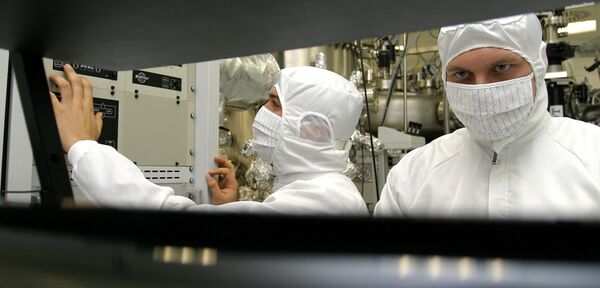MOSCOW, August 19 (RIA Novosti) – Recent developments in the U.S. have seen the creation of membrane-sealed nanowires, hybrid devices that function like nerve cells.
RIA Novosti finds out more from futurologist Sergei Moskalyov, head of the Futura Project.
- Recently at the Livermore National Laboratory in the United States, a hybrid bio-electronic device was developed, meaning a bio-electronic device that can be implanted in a human and replace certain organs. What do you think about this, how feasible is it?
MOSKALYOV: Yes, I know this research is going on, and I consider it feasible and necessary for humans. The first area in which research results will be implemented is medicine – for people that have lost their sight, hearing, or for whom some of their organs are not functioning correctly. Due to these hybrid devices, the organs will function properly. We know about the successful operation of cardiac stimulators. There will soon be implanted aids that can monitor insulin levels. People suffering from diabetes will no longer have to prick themselves and run a test. This can be done with a device that will soon be available, and such devices will be implanted. It is, of course, a monumental breakthrough and an unprecedented aid for such people.
- Are such devices being developed in Russia, and are there already some successes?
MOSKALYOV: In terms of bio-electronics, only on the level of contacts, when Russian scientists directly contact researchers in the West. In Russia, we don’t get any funding for such research. I know that there is private, well-funded research that is associated with gerontology, but not bio-electronic devices. Nevertheless, there is some regular work being done in the field of cardiology. There are also some cardiac stimulators produced in Russia. The main field where active research is done is development of cardiac stimulators.
- How soon will it be feasible to implant bio-electronic devices in the human body to create, for example, an artificial nervous system or vision?
MOSKALYOV: I think it will be a matter of five years, because there are already working models for the implementation of devices in blind people so that their vision returns, meaning that some hybrid devices will affect the optic nerve, and thanks to these, people will be able to see. They will, of course, not see clearly, but they’ll be able to see silhouettes and blue blotches.
- And what about an artificial nervous system to be implanted?
MOSKALYOV: There could be prototypes within five years, but widespread use is 10, 15 or 20 years away, meaning decades when it comes to widespread application. But they already exist as prototypes. If you’re talking about a hybrid brain similar to a computer device, that, of course, will take decades to be applied on a wide scale. Of course, all of this will become reality some day. We see this trend looking forward into the future, if cardiac stimulators are available today.
In the field of endocrinology and counteracting diabetes, there are devices that regulate processes in the human body. There are bio-electronic devices for the eyes, and this means that there will soon be similar devices for the ears as well… These things are not in the future, they are already here today...
Getting back to the article about silicon-based bio-electronic devices: these are all prototypes of course, and before something becomes the golden standard in medicine, any medication is researched and developed by hundreds of scientists over 10 years, for example, and then they make a decision – yes, this medication is the golden standard for treating such-and-such. Therefore the process takes decades. Right now we are seeing the first discovery and getting closer to the final result for the first time. Yes, it is possible to combine a silicon implant with living tissue and instruct a semiconductor device to react to events in the biological material. That is to say, this was accomplished five years ago.
Nanowires in the human body - first step to a cyborg?

© RIA Novosti . Sergey Venyavsky
/ Subscribe
MOSCOW, August 19 (RIA Novosti) – Recent developments in the U.S. have seen the creation of membrane-sealed nanowires, hybrid devices that function like nerve cells.


